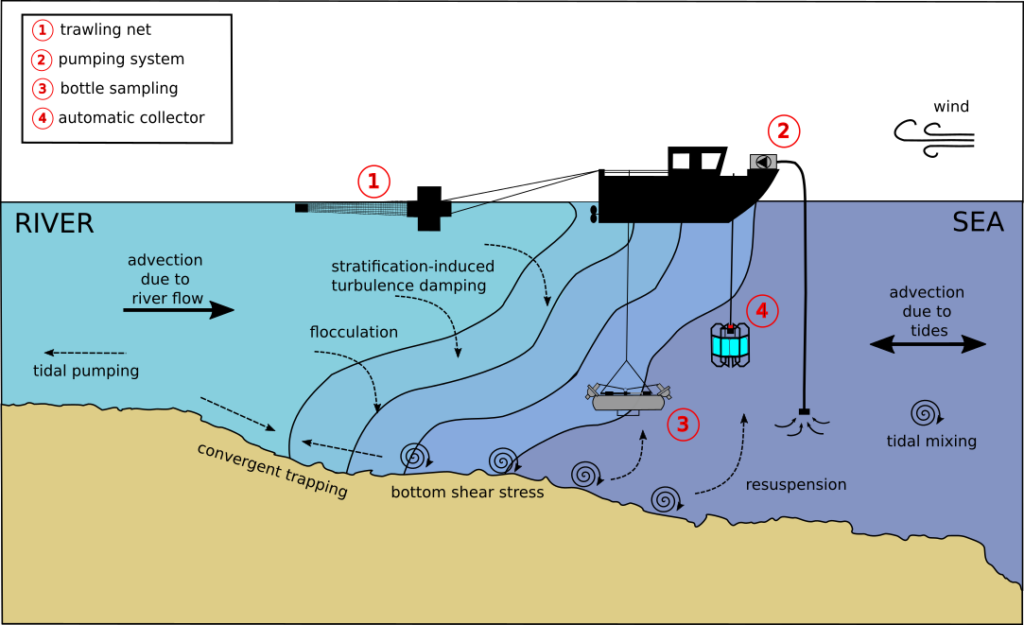Monitoring the abundance and characteristics of microplastics in estuarine waters is crucial for understanding the fate of microplastics at the land-sea continuum, and for developing policies and legislation to mitigate risks associated with their pollution. While protocols for monitoring microplastic pollution in oceans or beach sediments are well established, they may not be adequate for estuarine environments due to complex 3D hydrodynamics.
To address this issue, a part of PLASTINEST team has published a scientific paper in Marine Pollution Bulletin (link), discussing sampling methods and strategies for monitoring microplastics in estuarine waters. The paper highlights the importance of monitoring microplastic pollution in estuaries and proposes recommendations on when, where, and how to sample microplastics to obtain the most representative picture of microplastic pollution.

The team also emphasizes the urgent need for standardized methods and protocols to routinely monitor microplastics in estuaries. These protocols should be easily adaptable to different systems to ensure consistency and comparability of data across different studies.
In conclusion, we hope this work will be a significant contribution to the scientific community to improve the monitoring and inter-comparability of microplastic pollution in estuarine waters.

Key processes in regards to microplastic sampling strategies in estuaries. From Defontaine and Jalón-Rojas (2023).
Reference: Defontaine, S. and Jalón-Rojas, I. (2023) Physical processes matter! Recommendations for sampling microplastics in estuarine waters based on hydrodynamics, Marine Pollution Bulletin, Volume 191,114932, https://doi.org/10.1016/j.marpolbul.2023.114932.
Open access version (pre-print): https://hal.science/hal-04093809v1

Laisser un commentaire
Vous devez vous connecter pour publier un commentaire.